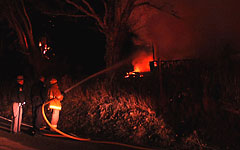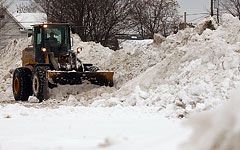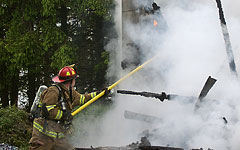 Make a plan
Make a plan
Why Should We Plan?
First, it is required. State and Federal regulations outline the need for schools to have emergency plans that outline how they will handle emergencies within their districts.
Next, it is the right thing to do. Schools hold one of our most vulnerable populations and should take all reasonable steps to develop emergency plans to protect school children, staff and facilities.
The following list is some of the regulations that outline the need to develop school emergency plans:
- NYS SAVE Regulation 155.17
- Required Schools to define building and district-wide emergency plans
- NYS Executive Order 26.1
- Listed ICS as the States “Command and Control System” during emergencies
- HSPD-5
- Required that all levels of government have the capability to work efficiently and effectively together using a single approach to incident management
Crisis Plan
If you don’t have a school crisis plan in partnership with public safety agencies, including law enforcement and fire, health, mental health and local emergency preparedness agencies, develop one.
Ensure that it addresses traditional crises and emergencies such as fires and severe weather events, school shootings and accidents, as well as terrorist activities.
If you do have a crisis plan, review it. Ensure that it addresses issues related to terrorism, such as biological, radiological and chemical attacks.
Train… Practice… and Drill! Documents on a shelf don’t work in a crisis.
Ensure that your school district crisis plan addresses the unique circumstances and needs of individual schools. Districts are encouraged to develop a separate plan for each school building. Each school crisis plan should address four major areas:
- Prevention/mitigation;
- Preparedness;
- Response
- Recovery
Actions that schools should take under each of these areas include:
- Prevention & Mitigation:
- Conduct an assessment of each school building. Identify those factors that put the building, students and staff at greater risk, such as proximity to rail tracks that regularly transport hazardous materials or facilities that produce highly toxic material or propane gas tanks, and develop a plan for reducing the risk. This can include plans to evacuate students away from these areas in times of crisis.
- Work with businesses and factories in close proximity to the school to ensure that the school’s crisis plan is coordinated with their crisis plans.
- Ensure a process is in place for controlling access and egress to the school. Require all persons who do not have authority to be in the school to sign in.
- Review traffic patterns, and where possible, keep cars, buses, and trucks away from school buildings.
- Review landscaping, and ensure buildings are not obscured by overgrowth of bushes or shrubs where contraband can be placed or persons can hide.
- Preparedness:
- Work with law enforcement officials and emergency preparedness agencies on a strategy for sharing key parts of the school crisis plans.
- Work with local first responders to develop site plans for each school facility.
- Ensure that students and staff are aware of specific details of the emergency plan and know what to do if the plan is put into action.
- Ensure there are multiple evacuation routes and assembly points.
- Practice responding to crisis on a regular basis.
- Ensure a process is established for communicating during a crisis.
- Inspect equipment to ensure it operates during crisis situations.
- Have a plan for discharging students. Remember that during a crisis many parents and guardians may not be able to get to the school to pick up their child. Make sure every student has a secondary contact person and contact information readily available.
- Have a plan for communicating information to parents and for quelling rumors. Cultivate relationships with the media ahead of time, and identify a public information officer to communicate with the media and the community during a crisis.
- Response:
- Develop a command structure for responding to a crisis. Outline the roles and responsibilities for administration, educators, and school crisis response teams in responding to different types of crisis, reviewed and approved prior to a response.
- Work closely with Incident Commanders in order to provide for an effective and efficient response.
- Recovery:
- Return to the business of teaching and learning as soon as possible.
- Identify and approve a team of credentialed mental health workers to provide mental health services to faculty and students after a crisis. Understand that recovery takes place over time and that the services of this team may be needed over an extended time period.
- Ensure the team is adequately trained.






 School Downloads
School Downloads